I saw this most complete end-to-end double-arched rainbow on my way from La Spezia to Pisa in Northern Italy.
Before you scroll down to the facts about rainbows, here’s the story behind the pictures:
It’s a 80 km drive from the port of La Spezia to Pisa where the famous and wonderful Leaning Tower is situated. We were greeted with October rains in the morning and throughout the drive it was a play of sun and the clouds with a little drizzle here and there. The drive is not spectacularly scenic and you can’t expect to have the Mediterranean Sea by your side although geographically you’re driving along the coast line but much inland. What you get to see is the Italian countryside in all its glory with expansive olive plantations. Far away in the horizon, you can see the marble quarries – almost blanched and sometimes bare hills from where come the famous Italian marbles.
While driving back from Pisa in the afternoon, we were late to catch the ship which was waiting to depart from the port of La Spezia. But on the way our day was made as we were greeted with this colorful display of colorful celestial light in the form of a complete double-arched rainbow – deep and distinct – far out in the horizon lighting up the distant hills with its marvelous hues.
I have never seen such complete rainbows that lasted for so long and stayed for a better part of the length of our otherwise boring highway drive.
Finally, here is a poem I wrote:
“The rain cannot wash away my colors,
The storm cannot blow away my light,
The lightening cannot steal my thunder,
The clouds cannot hide me from your sight.
I’m the arch gate of heaven, it seems
For I am the rainbow of your dreams!”
Copyright (c) Subhamoy Das | All rights reserved
1. What is a double arch rainbow?
Image by: subhamoydas
In a “primary rainbow”, the arc shows red on the outer part and violet on the inner side. This rainbow is caused by light being refracted (bent) when entering a droplet of water, then reflected inside on the back of the droplet and refracted again when leaving it.
In a double rainbow, a second arc is seen outside the primary arc, and has the order of its colors reversed, red facing toward the other one in both rainbows. This second rainbow is caused by light reflecting twice inside water droplets.
2. Do rainbows mostly appear in the afternoon?
Image by: subhamoydas
Rainbows are caused by sunlight that always appear in the section of sky directly opposite the sun.
Rainbows can be observed whenever there are water drops in the air and sunlight shining from behind the observer at a low altitude angle. Because of this, rainbows are usually seen in the western sky during the morning and in the eastern sky during the early evening.
It was late afternoon. And the setting sun from the seaside illuminated the hills inland. Rain droplets caused the perfect setting for a deep and full rainbow.
3. What’s a perfect setting for a rainbow?
Image by: subhamoydas
The most spectacular rainbow displays happen when half the sky is still dark with raining clouds and you are at a spot with clear sky in the direction of the sun. The result is a luminous rainbow that contrasts with the darkened background.
4. What lies at the end points of a rainbow?
Image by: subhamoydas
The rainbow is not located at a specific distance, but comes from an optical illusion caused by any water droplets viewed from a certain angle relative to a light source. Thus, a rainbow is not an object and cannot be physically approached.
5. Why is the sky outside a rainbow darker?
Image by: subhamoydas
As is evident by the photos on this page, the sky inside of a primary rainbow is brighter than the sky outside of the bow. This is because each raindrop is a sphere and it scatters light in a many-layered stack of colored discs over an entire circular disc in the sky, but only the edge of the disc, which is colored, is what is called a rainbow.
6. Is it possible to photogarph a full rainbow?
Image by: subhamoydas
It is difficult to photograph the complete semicircle of a rainbow in one frame, as this would require an angle of view of 84°. For a 35 mm camera, a lens with a focal length of 19 mm or less wide-angle lens would be required.
I used my 18 mm lens to get the most wide-angled shot, as you can see in the last photograph below. Still I couldn’t take the complete arch perhaps because I was seeing it from a running vehicle.
714views
Share on Facebook
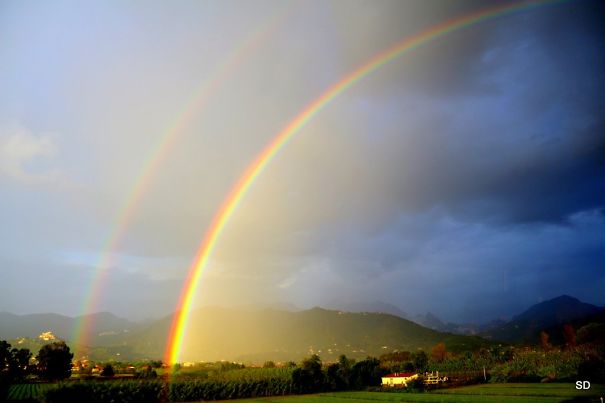
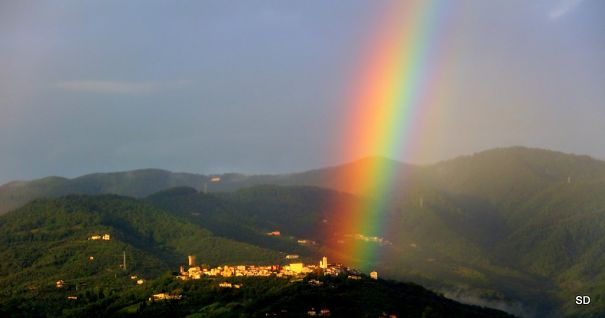
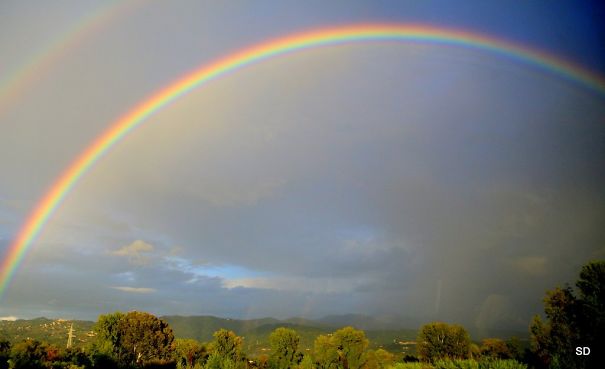
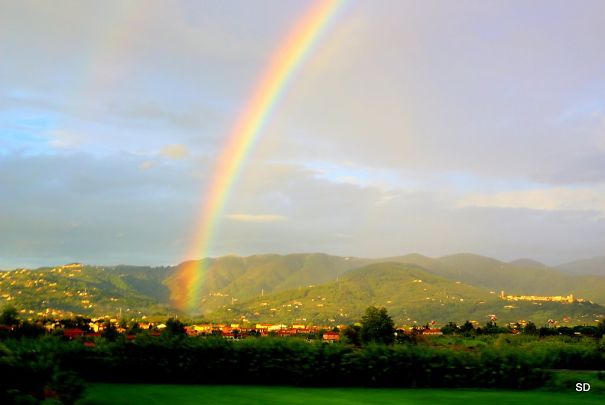
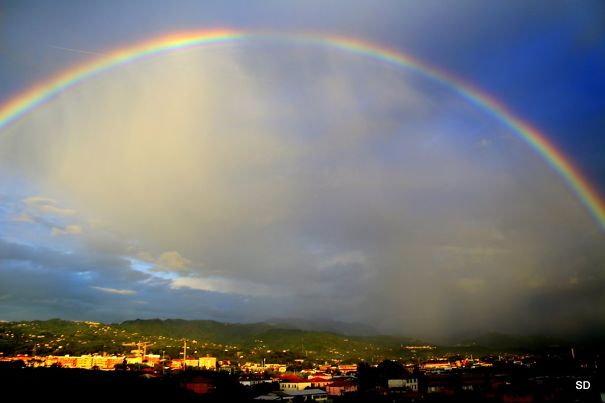
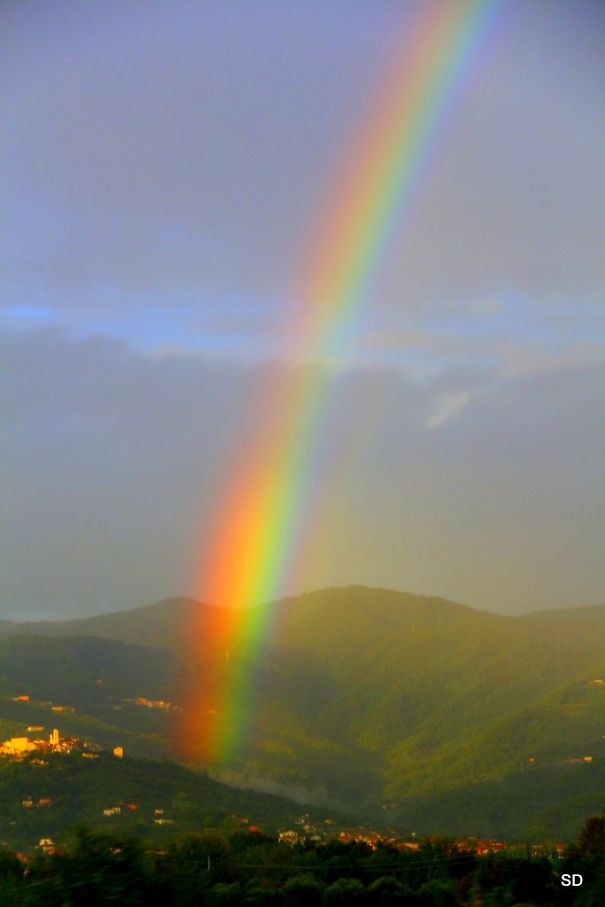



3
1